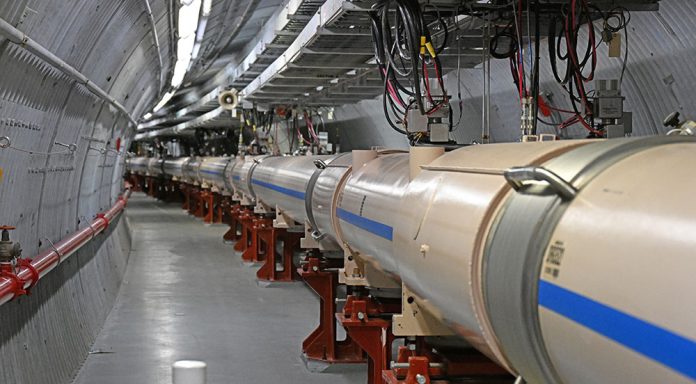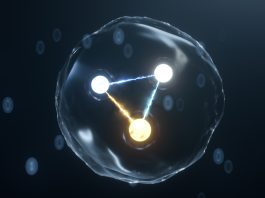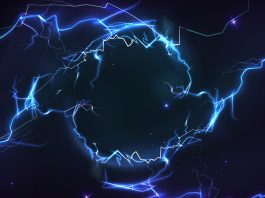The Relativistic Heavy Ion Collider (RHIC), a premier nuclear physics research facility operated by the U.S. Department of Energy (DOE) at Brookhaven National Laboratory, has embarked on its 25th and final year of operation.
Since its first experiment in 2000, RHIC has been at the forefront of exploring fundamental aspects of matter, smashing together gold nuclei at nearly the speed of light to recreate the extreme conditions that existed shortly after the Big Bang.
This year’s operations mark a significant milestone, as RHIC physicists aim to complete data collection for one of their primary objectives: studying quark-gluon plasma (QGP).
This unique state of matter, composed of quarks and gluons, existed in the early Universe before protons and neutrons formed. RHIC’s ability to create and analyse QGP has provided invaluable insights into the properties of nuclear matter under extreme conditions.
Run 25: The final push for discovery
In Run 25, scientists will leverage all technological advancements and data collection strategies developed over the past 25 years to refine their understanding of QGP.
This includes studying particle jets, high-energy collisions, and novel detection methods to achieve unprecedented precision in their findings.
The highest priority experiment this year focuses on gold-gold collisions at 200 billion electron volts (GeV), expected to run until early June.
The team will assess data collection progress mid-year, determining whether additional types of collisions are feasible within the available funding.
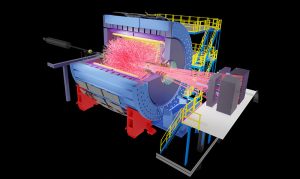
A key aspect of Run 25 will also be Accelerator Physics Experiments (APEX), conducted biweekly in 15-hour sessions, to enhance RHIC’s performance and contribute to developing the future Electron-Ion Collider (EIC).
Throughout the summer, scientists will focus on improving accelerator performance, including increasing beam luminosity and refining collision conditions.
These enhancements will be instrumental in ensuring that the data collected is of the highest quality, providing deeper insights into the behaviour of QGP.
STAR Experiment: Unravelling the mysteries of QGP
The STAR detector, a cornerstone of research efforts at the Relativistic Heavy Ion Collider since its inception, has undergone continuous upgrades to enhance data collection.
Over the past two years alone, STAR has captured 8 billion high-quality gold-gold collision events, with plans to add 10 billion more in Run 25.
By utilising advanced triggers – sensors that analyse collision characteristics in real time – scientists will collect enriched datasets featuring high-energy particles.
This will facilitate a multimodal analysis approach, allowing researchers to examine multiple variables simultaneously, leading to more comprehensive insights into QGP’s global properties.
STAR’s improved particle tracking capabilities now allow physicists to observe collision events with greater accuracy, helping to refine measurements of QGP’s temperature, viscosity, and behaviour under extreme conditions.
These findings will help bridge the gap between theoretical predictions and experimental observations, paving the way for a deeper understanding of nuclear matter.
sPHENIX: Unlocking new frontiers in nuclear physics
The sPHENIX detector, which commenced operations in 2023, will be fully deployed in Run 25 to study QGP with unprecedented accuracy.
The team aims to collect data from 50 billion collision events, complementing high-energy experiments conducted at the Large Hadron Collider (LHC) in Europe.
sPHENIX is equipped with advanced particle tracking capabilities, along with the first barrel hadronic calorimeter at the Relativistic Heavy Ion Collider, which enables comprehensive jet reconstruction.
This technology allows scientists to identify heavy quark particles and study their interactions within QGP. By capturing and analysing high-energy jets, researchers hope to deepen their understanding of how QGP modifies energy loss mechanisms.
The study of heavy quarks, such as bottom and charm quarks, will provide critical insights into QGP’s properties.
These particles, produced in the initial moments of a collision, traverse the plasma as it evolves, offering a unique probe into the medium’s density, temperature, and ability to dissipate energy.
By comparing RHIC’s results with data from LHC’s higher-energy collisions, physicists can map out how QGP behaves across different temperature ranges.
APEX studies pave the way for the Electron-Ion Collider
As the Relativistic Heavy Ion Collider prepares for its final year, APEX studies will focus on addressing key challenges for the future Electron-Ion Collider, which will be built using components from RHIC alongside new electron accelerator technology.
Scientists will conduct experiments to maintain beam stability, minimise intrabeam scattering, and investigate beam interaction dynamics to enhance accelerator performance.
These studies, conducted in short but highly efficient time slots, will play a fundamental role in optimising EIC’s future operations, such as:
- Beam dynamics: Enhancing beam stability and reducing scattering to maintain high collision rates.
- Detector optimisation: Testing new methods to improve data collection efficiency and precision.
- Energy loss studies: Refining our understanding of how high-energy particles interact with QGP.
These efforts will ensure that RHIC’s legacy extends beyond its final run, contributing valuable knowledge to the next-generation collider.
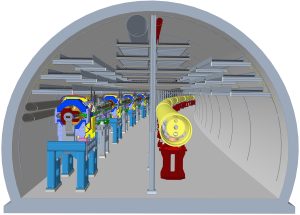
RHIC’s enduring impact and the transition to EIC
While RHIC’s final run signifies the conclusion of a historic chapter in nuclear physics, its legacy will extend far beyond 2025.
The knowledge, technology, and expertise gained over the past quarter-century will serve as the foundation for future discoveries at the EIC.
Many of the innovations developed at RHIC, including hadronic calorimeters, advanced pixel sensors, and streaming readout data acquisition systems, will be repurposed for use in EIC experiments.
These advancements have already significantly improved measurement precision and will continue to play a critical role in future research.
The transition from RHIC to EIC represents an evolution in nuclear physics, shifting from studying hot nuclear matter in QGP to probing cold nuclear matter using high-energy electrons.
This will enable scientists to investigate the internal structure of protons and neutrons with unparalleled precision, answering fundamental questions about the nature of matter and the forces that bind it together.
As the construction of the EIC begins, physicists will continue to analyse the vast amounts of data collected at RHIC. This will ensure that the collider’s impact on nuclear science continues well into the next decade.
With RHIC’s concluding experiments and the upcoming era of the Electron-Ion Collider, nuclear physicists stand at the precipice of a new age of discovery – one that promises to unravel the deepest mysteries of our Universe.

